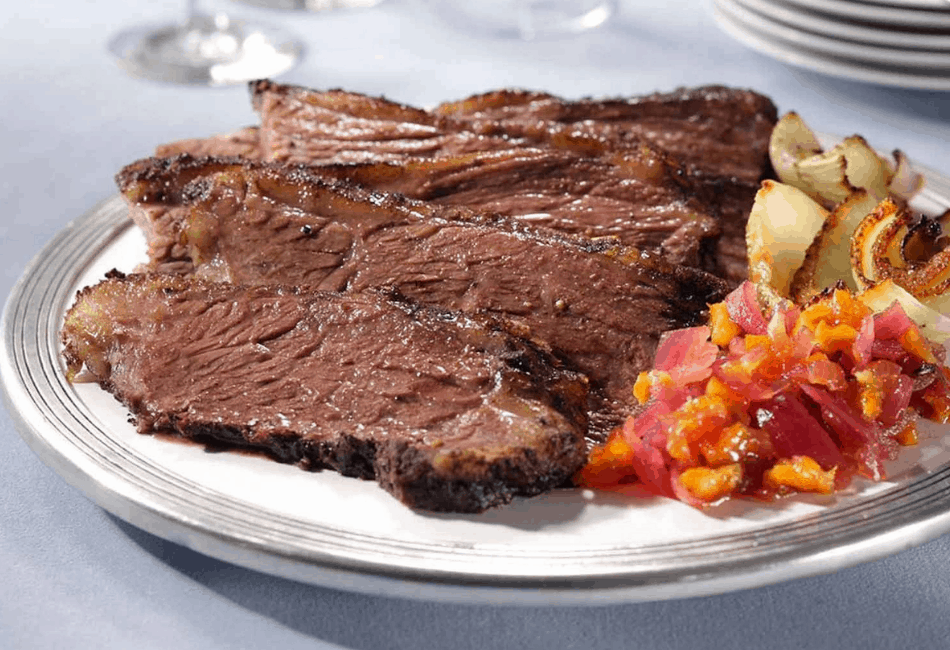- Good Chop Review: Is It Really Worth It? - November 20, 2021
- Rastelli’s Meat Review: Is It Right For You? - October 5, 2021
- Farm Foods Market Review: Is It Worth Your Money? - August 20, 2021
One of the biggest challenges of cooking or smoking a brisket is preventing it from getting dry and brittle. Many people don’t realize that the moisture for a brisket comes from the marbling or fat of the meat, which breaks down while you’re cooking it.
One popular cut of brisket that competition smokers like to use is Wagyu. This gives pitmasters a bit of an edge when they’re participating in a contest for best brisket. So why is the Wagyu brisket so popular? And how is it different than your standard brisket?
We’ll answer these questions and more in the post below, so keep reading to find out!
What is Wagyu Brisket?
It’s the marbling in Wagyu brisket that makes it so appealing. This marbling prevents the leaner part of the brisket from getting too dry. Plus, it adds to the delicious, melt-in-your-mouth texture that Wagyu meat is known for. This marbling breaks down into liquified collagen that makes the meat so tasty.
But that doesn’t really tell us what Wagyu is, does it?
Wagyu is a combination of two distinct Japanese words. When these words are put together, they mean ‘Japanese Cow.’ In Japan, Wagyu refers to one of four types of Japanese cattle breeds. If you’re not in Japan, Wagyu refers exclusively to the beef taken from the Japanese Black cattle, also called Kuroge Washu.
This breed of cattle is sought after around the world for the amazing marbling in its meat. This is what gives it an amazing buttery flavor and its well-known smooth texture. However, most of the Wagyu beef you see for sale at your grocery store or your local butcher is domestic or American Wagyu.
American Wagyu vs. Japanese Wagyu
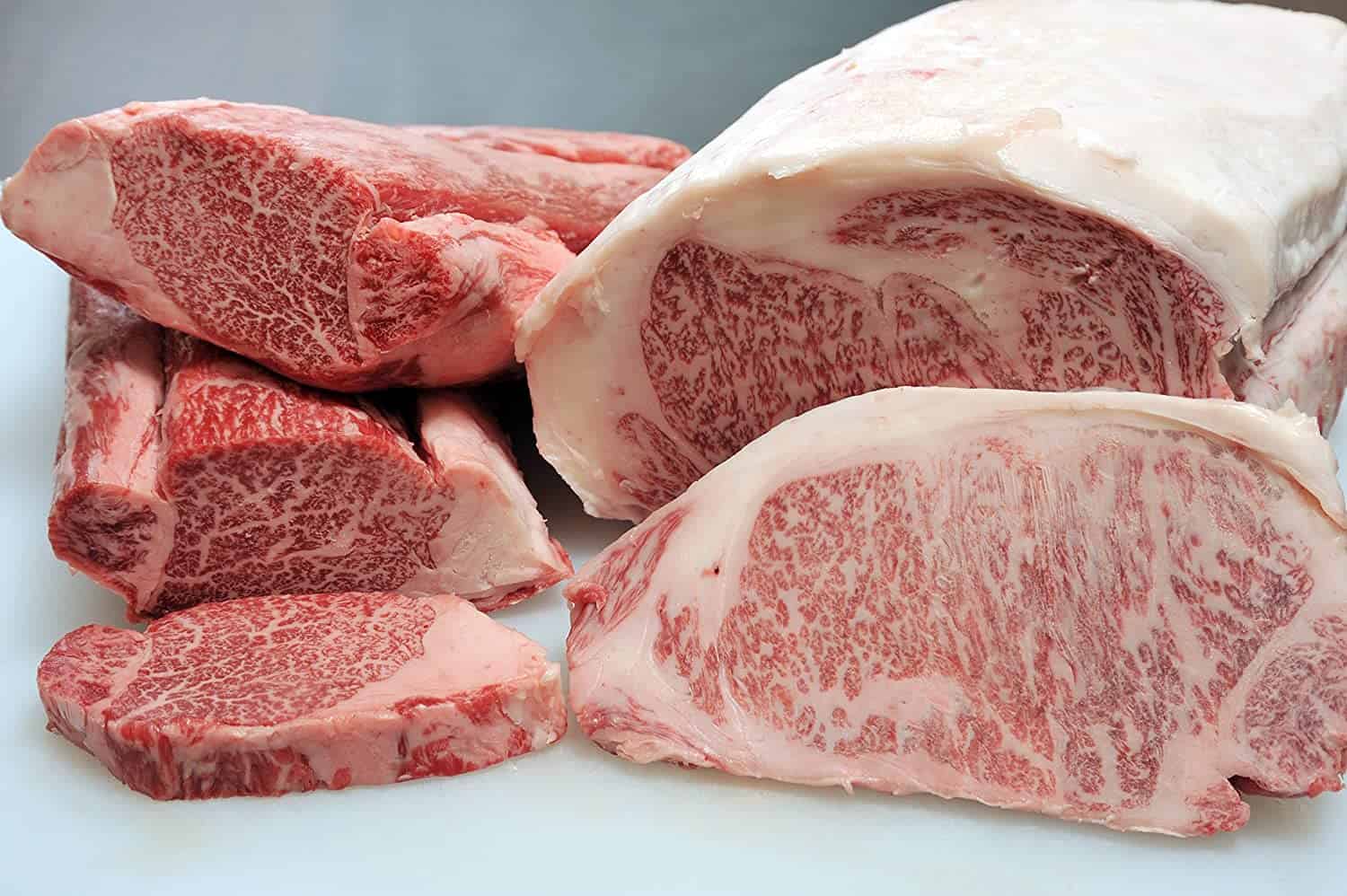
The first thing you should know about Wagyu beef is that there is a significant difference between American Wagyu and Japanese Wagyu. Japanese Wagyu is beef that only comes from 100% pure Japanese cattle breeds. These cows are so carefully maintained and managed that the vast majority of the cattle can trace their lineage back to an original bull.
American Wagyu, or domestic Wagyu, can also trace its lineage back to full-blooded Kuroge Washu breeds that were exported from Japan in the 1980s. However, these cattle were interbred with Angus strains in Australia, the United States, and Canada as a way to increase their production.
The USDA (United States Department of Agriculture) does not certify American Wagyu the same way the Japanese certify theirs. To be considered Wagyu in the United States, it only has to consist of 46.875% of Kuroge Washu blood. Overall, Japanese Wagyu is the more premium of the two. It’s a much better quality beef and is more difficult to source, which is what makes it one of the most expensive meats on the planet.
That doesn’t mean American Wagyu isn’t good. It’s still a high-quality cut of beef. Rarely, a cut of American Wagyu isn’t graded Prime by the USDA. However, the Wagyu you get in the US is more than likely a mixture of Kuroge Washu and some other domesticated breed.
Is Wagyu Brisket Worth Paying For?
This is a tough question to answer as it’s tough to decide on whether or not a piece of meat is “worth it.” Having said that, Wagyu brisket is an amazing cut of being that has the advantage of being both high-quality beef and counteracting the dryness that is common to smoking or cooking a brisket.
That’s why many barbecue competitors are quick to find a nice, juicy piece of Wagyu brisket anytime they enter an event. It’s tough to beat the taste of Wagyu beef, and the brisket isn’t going to dry out as much as traditional cuts do. However, some claim that Wagyu brisket doesn’t have the same beefy flavor as prime quality brisket.
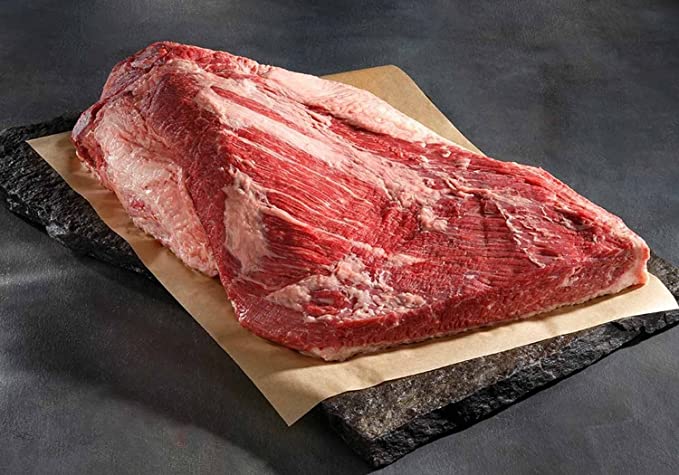
If you’re just learning how to cook a brisket, it’s probably smarter to stick with a cheaper option. Once you’re comfortable with your process, then you can splurge on a delicious cut of Wagyu brisket for those special occasions in your life.
How are Prime Brisket and Wagyu Brisket Different?
It is commonly thought that Wagyu is a higher grade beef than Prime brisket, but that isn’t necessarily true. Of course, one of the primary differences between USDA Prime brisket and Wagyu brisket is the grading parameters used to certify these cuts.
Interestingly, the USDA gives less than 2% of beef in the US a Prime grade. The certification comes from an examination that includes two factors: the intramuscular fat of the beef and the age of the carcass when slaughtered. These factors are gauged by examining the ribeye, which is taken from in between the 12th rib and the 13th rib.
Comparatively, Wagyu beef is typically graded using Japan’s beef grading system. This system of certification is more complicated than what the USDA uses. There are three separate grades used for Japan’s Wagyu beef.
First is the yield grade. This letter grade shows how much meat is available on the most appealing parts of the carcass. A is an above-average score, B is average, and C is below average. Next is the quality grade, which considers the amount of marbling on the beef. Like the USDA, the Japanese system considers the quality of the fat on the beef and the meat’s texture.
Based on these factors, the beef is given a score between one and five, with one being the lowest and five being the best. Last is the Beef Marbling Score or BMS. This score looks at the marbling of the meat in more detail. Then, the beef is given a ranking between 1 and 12, with 1 being little to no marbling and 12 being excellent marbling.
The very best Japanese Wagyu beef you can find will earn a grade of A1 9-12. This score means the meat is of the best quality, and the yield is from the most popular portions of the carcass are above average. It also means the marbling is amazing.
Wagyu Brisket vs. Prime Brisket
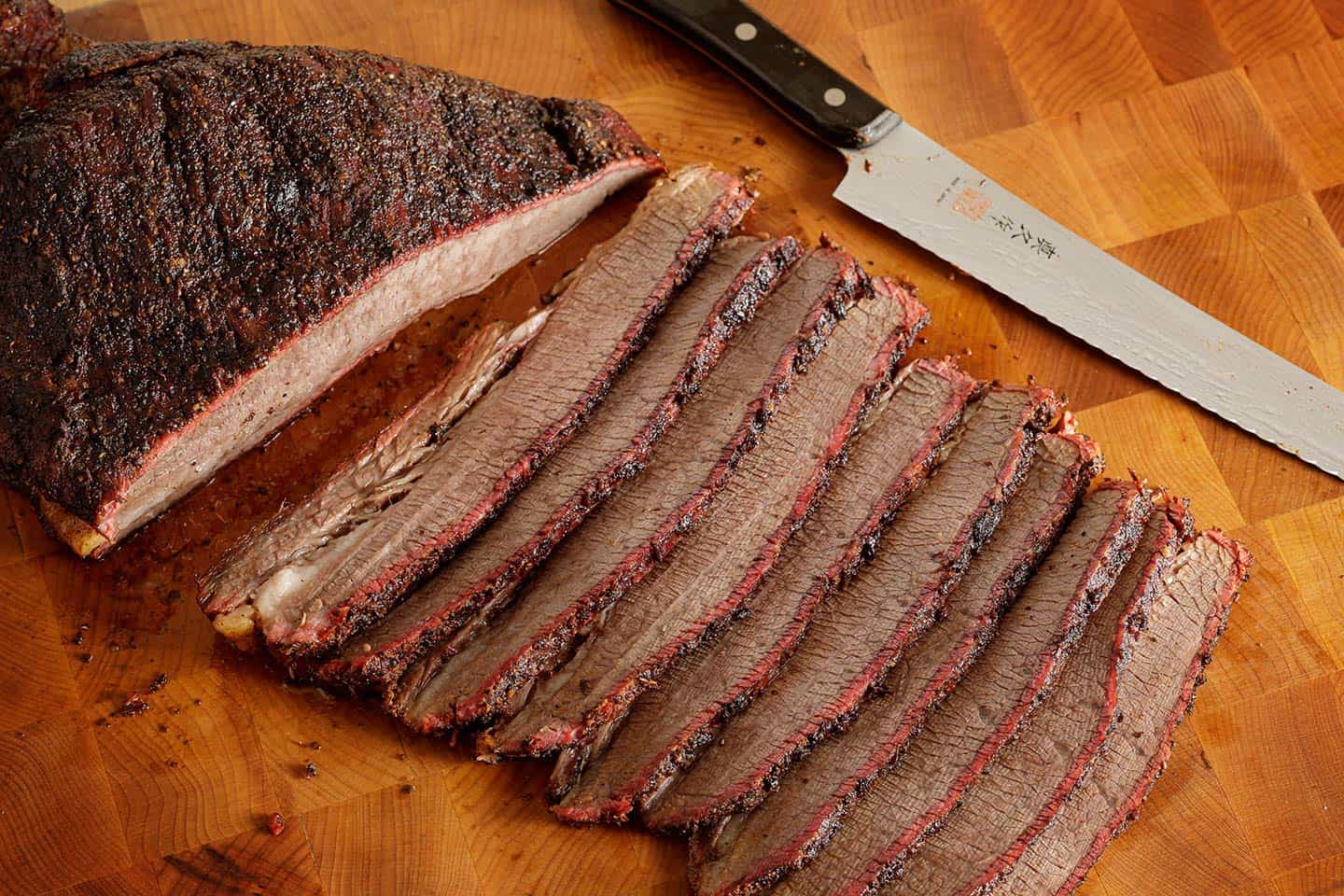
As you can see, a Wagyu Brisket that has a score of 9 or better is a better cut of beef than USDA Prime beef brisket. Even though the meat quality might be similar, the Wagyu brisket will offer more high-quality marbling and better intramuscular fat. As a result, it will have excellent texture and flavor.
Japanese Wagyu Brisket graded authentic A5 is among the best beef you’ll find in the world. However, you get what you pay for. For example, a 30-pound hunk of Wagyu brisket could run more than $1000. So if you’re thinking of smoking or cooking some Wagyu brisket, you might want to make sure it’s worth it.
Where Can You Get Wagyu Brisket?
If you’re in the US, it can be difficult to find places to find a legitimate, authentic Wagyu brisket. Plus, it’s going to cost you quite a bit to get one. However, there are a few places to get high-quality cross-bred Wagyu.
DeBragga
You’ll find a wide variety of Wagyu beef options on the DeBragga site. The online butcher offers ground beef, steaks, and burgers, all of the Wagyu variety. Unfortunately, they don’t offer pure Wagyu beef but rather a mixture of Imperial Wagyu beef and American Wagyu. It may not be the real thing, but it’s still very good beef.
DeBragga has American Wagyu brisket on its site. They offer a two-pack of briskets that weigh in at roughly 5 or 6 pounds each. The price is reasonable, and the quality is good. Plus, if you live in the Northwest region of the US, DeBragge will ship the briskets to you using their overnight delivery.
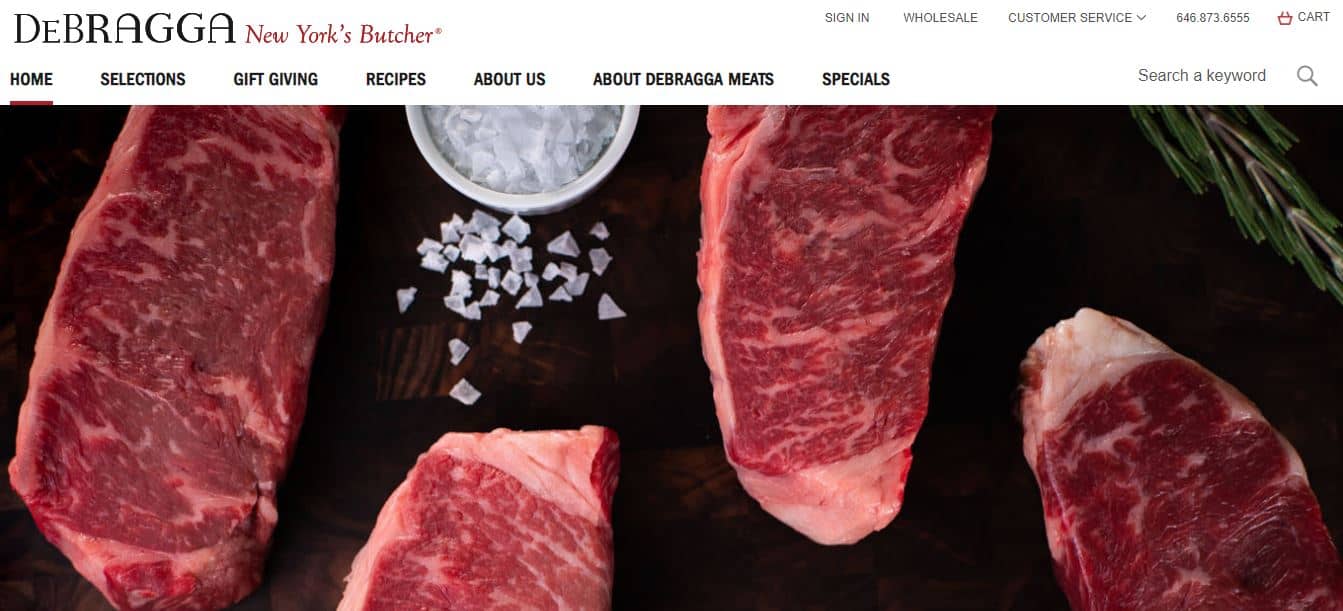
Of course, the downside is that if you don’t live in the Northwest, then you’ll have to wait for your brisket. Plus, it will cost a little more since the meat has further to travel.
Snake River Farms
Snake River Farms was originally founded in 1968 as a family-owned business. Since that time, the company has gone from a ranching and feeding company to a beef and pork supplier. Not only does Snake River Farms make its meat available online for customers, but it also provides top-quality beef to highly-rated restaurants throughout the United States.
When it comes to meat, Snake River Farms is one of the best. The company takes the quality of its meat very seriously, meticulously managing every aspect of the cow’s life cycle. For their Angus/Wagyu cross-breeds, Snake River Farms uses traditional Japanese methods to ensure their meat is treated as close to their ancestors as possible.
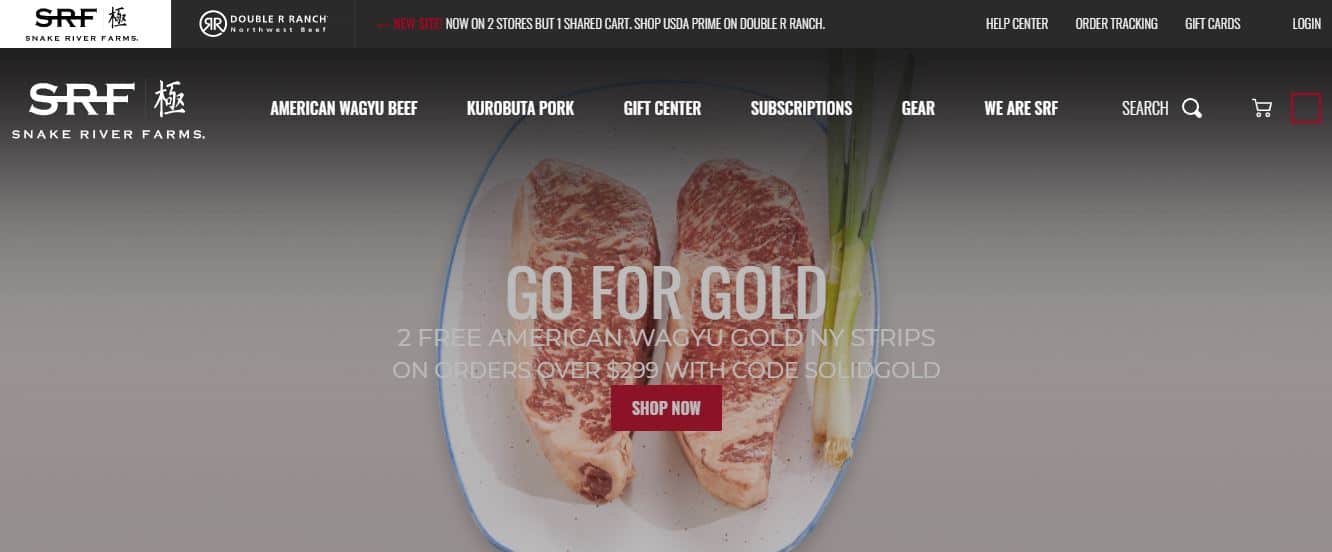
You can get two grades of Wagyu brisket through Snake River Farms: the premium Gold Grade, which offers a BMS score of 9+, and the Black grade, which is still of excellent quality. The meat ships frozen, so it’s not fresh when it arrives, but it doesn’t seem to impact the taste of the meat. That means once you have it cooked, you’re going to have delicious, tender, tasty Wagyu brisket just waiting to be consumed. Check out our complete guide on the best online beef delivery services for more recommendations!
Cooking Your Wagyu Brisket
If you’ve cooked or smoked a brisket before, then you know that to take it low and slow. It’s the same way when smoking your Wagyu brisket.
Here are some suggestions to help you get the best possible flavor and taste from your Wagyu brisket:
- Give yourself plenty of time – The biggest advantage a Wagyu brisket offers is the amount of fat and marbling within the meat. This means it’ll take a little longer for the fat to render down. Additionally, you might consider turning up the temperature a little to finish off your brisket. Something in the range of 225 degrees should be plenty to get that fat rendered.
- Use a rub – Wagyu is well-known for its delicious flavor, but that doesn’t mean you can’t enhance them a bit. Use a light coating of your favorite rub to bring those flavors out instead of smothering them under a thick layer of spices.
- Trim off a little extra – Since Wagyu brisket has so much intramuscular fat, you can be a little more aggressive when you trim it. First, however, remember to leave at least ¼” of fat on your brisket.
- Probe your meat – Wagyu briskets are expensive. As a result, smoking your first one can be nerve-wracking. One way to help calm your nerves is through the use of a meat thermometer. This lets you know exactly what temperature your brisket is so that you can take it off the smoker at just the right time.
FAQs
Question: How long should my Wagyu brisket rest after cooking?
Answer: Ideally, you’ll let your brisket rest for at least an hour after you take it off the smoker. If you plan on eating it later, let it chill for two hours. Don’t fool yourself into thinking you can let it rest for a few minutes. That might work for a chicken breast, but it’s not going to get the job done for a Wagyu brisket.
Question: What should I spray on my Wagyu brisket to ensure it stays moist?
Answer: The fat in your Wagyu brisket will ensure that it stays plenty moist, but if you’re worried about it, you can use apple juice, water, or apple cider vinegar on it every hour or so. This will help ensure that your brisket remains moist and doesn’t burn or get too dry.
Question: Should I wrap my Wagyu brisket?
Answer: Wood smokers aren’t perfect, which means the temperature is going to fluctuate while your meat is on the grill. Do your best to keep it between 225 and 275 degrees, and you’ll be fine. After four hours, check the internal temperature of your brisket. Once it reaches 165 degrees and has a deep brown, almost black crust, take your brisket off and wrap it up.
Take Your Brisket Game Up a Notch
Wagyu brisket is delicious and tasty, but it’s also expensive. And for the more competitive smokers out there, it’s a little divisive. Some people believe it’s the best brisket you can get, while others prefer to stick to good ol’ USDA Prime brisket.
The best way to decide is to try both for yourself. You know how both Wagyu and Prime are graded and certified, so you know what to look for and how to cook it. Then, when you’re ready, splurge on your brisket and get yourself a nice, thick, beautifully marbled Wagyu brisket. You won’t regret it.

